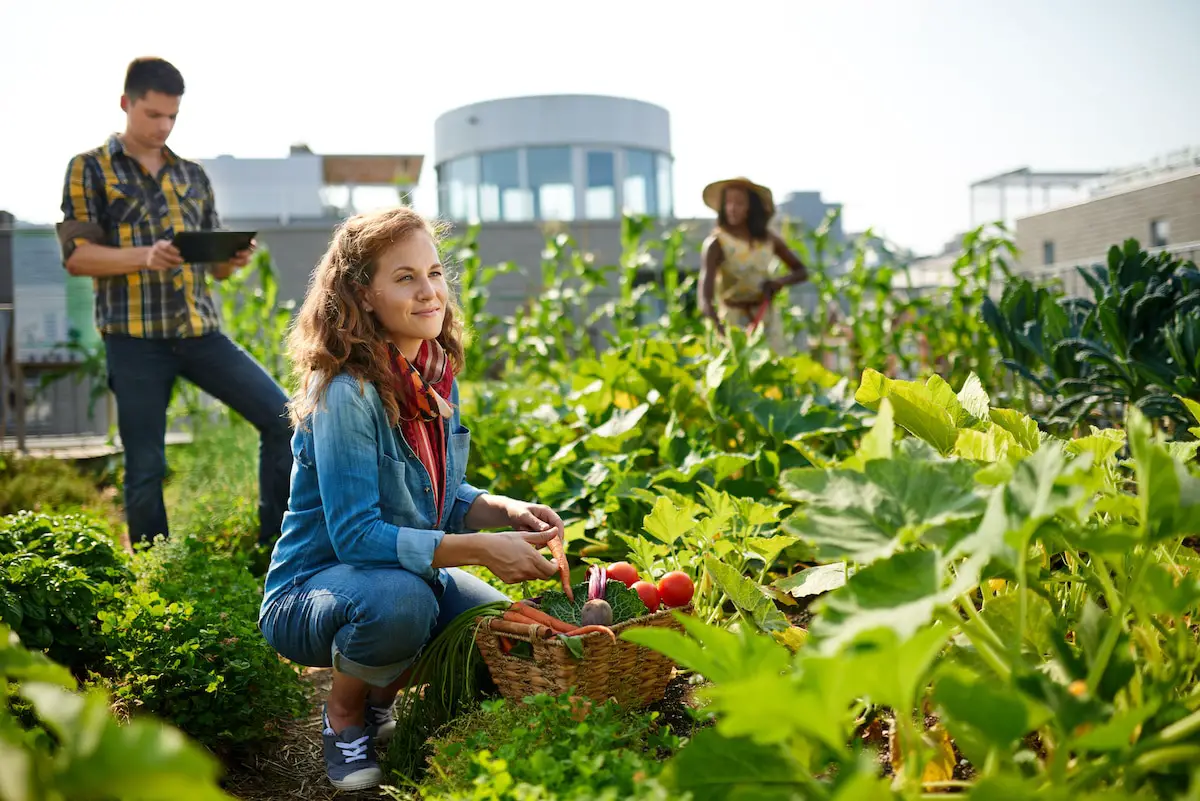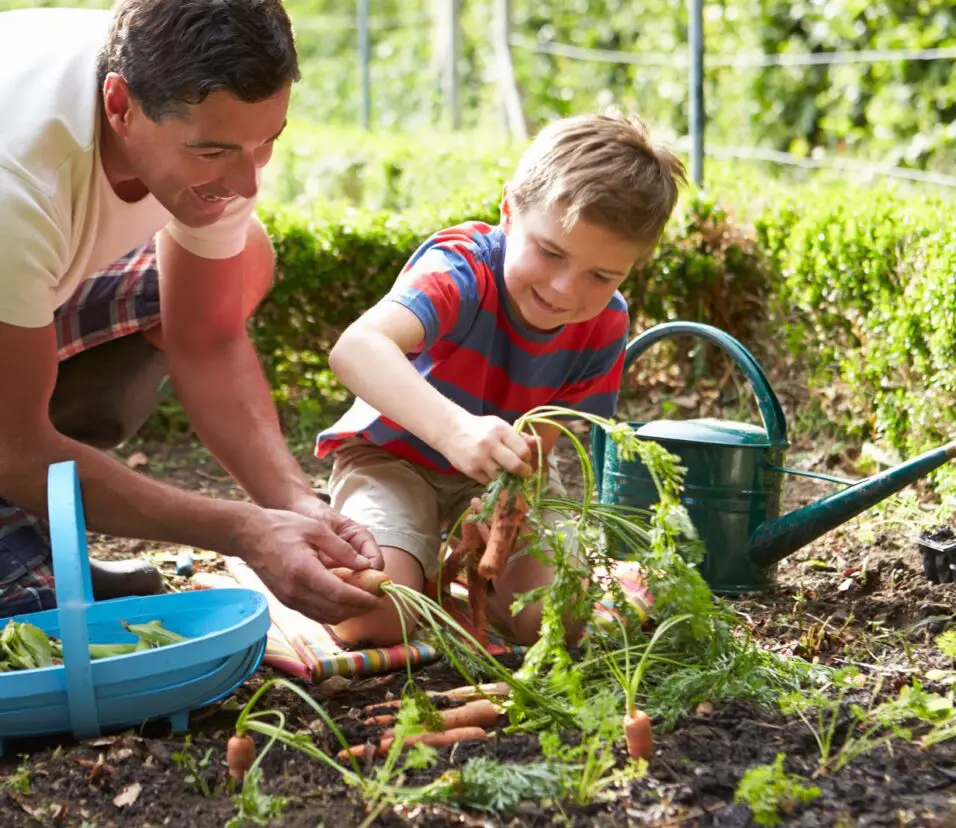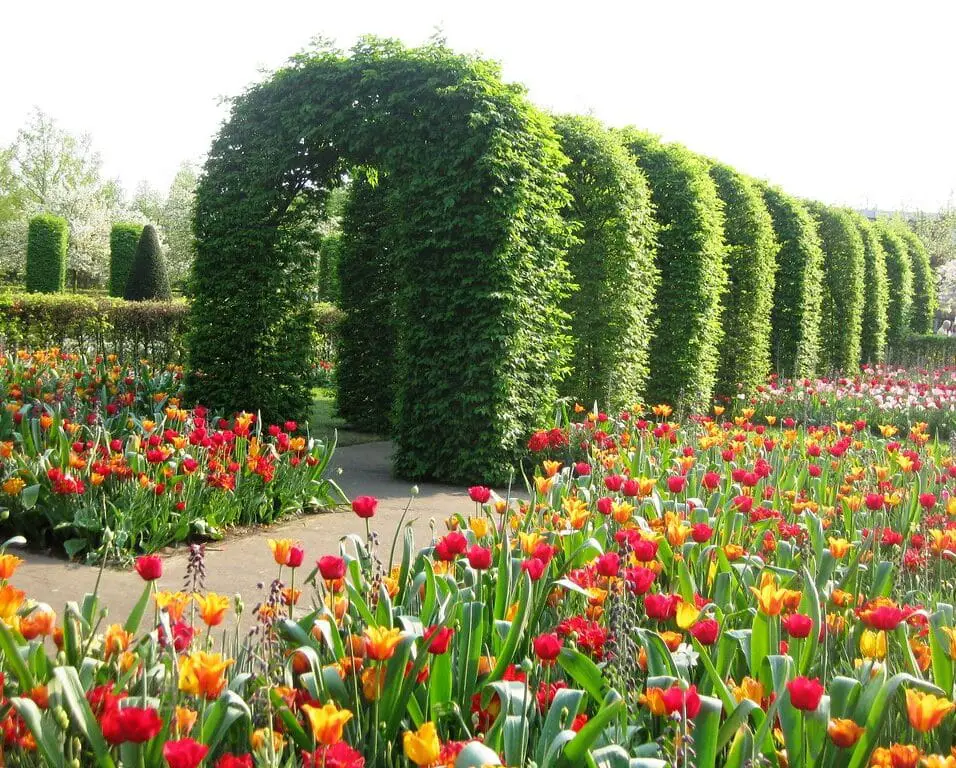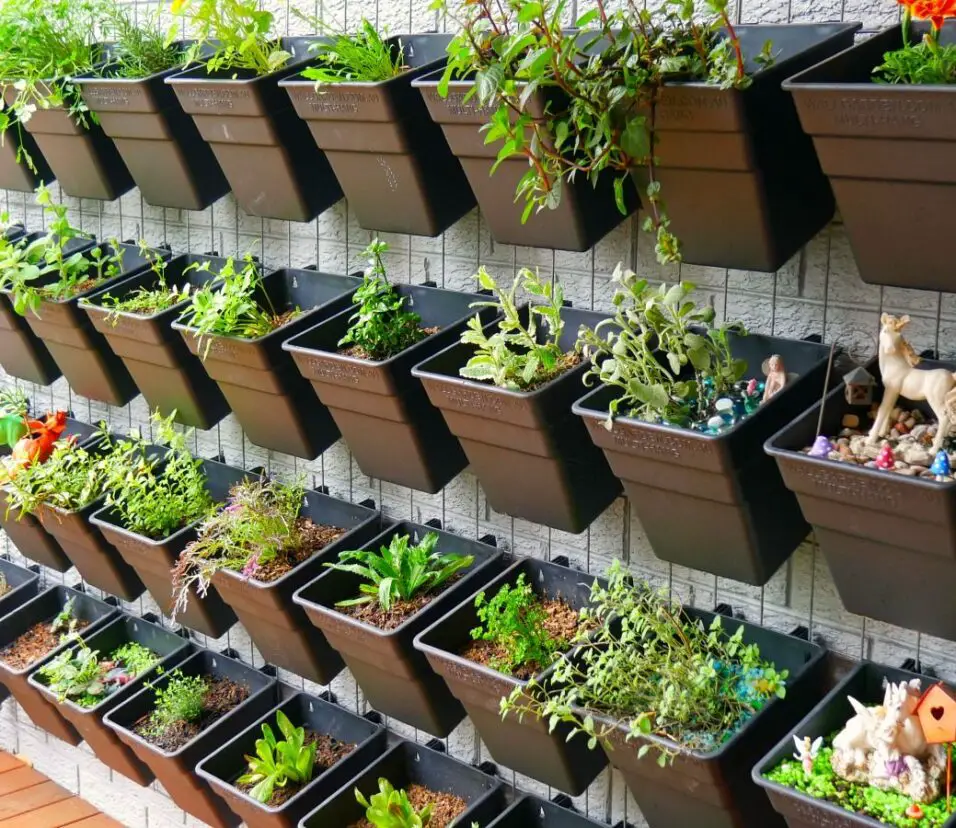What Is Urban Gardening
Introduction
What Is Urban Gardening: Urban gardening refers to the practice of growing plants and vegetables in urban areas, such as cities and towns. It is a form of gardening that has gained popularity in recent years as more people are becoming interested in sustainable living and finding ways to connect with nature in urban environments. Urban master gardeners can take many forms, from small rooftop gardens to community gardens in vacant lots or even indoor gardens in apartments.
One of the main reasons for the rise in urban gardening is the increasing awareness of the environmental impact of traditional agriculture and the desire to reduce our carbon footprint. By growing food locally in urban areas, we can reduce the need for long-distance transportation and the associated greenhouse gas emissions. Urban gardening also promotes biodiversity by providing habitats for insects and birds in otherwise concrete-dominated landscapes.
In addition to the environmental benefits, urban gardening also offers numerous social and health benefits. It provides an opportunity for community engagement and fosters a sense of belonging and connection among urban dwellers. Community gardens, in particular, serve as gathering spaces where people from diverse backgrounds can come together to grow food, share knowledge, and build relationships.
Urban gardening can improve food security by increasing access to fresh and nutritious produce in areas where there may be limited access to grocery stores or fresh food markets. It empowers individuals and communities to take control of their food sources and reduce their reliance on industrialized agriculture. Additionally, urban gardening can promote physical activity and mental well-being, as gardening has been shown to reduce stress and improve overall mood.
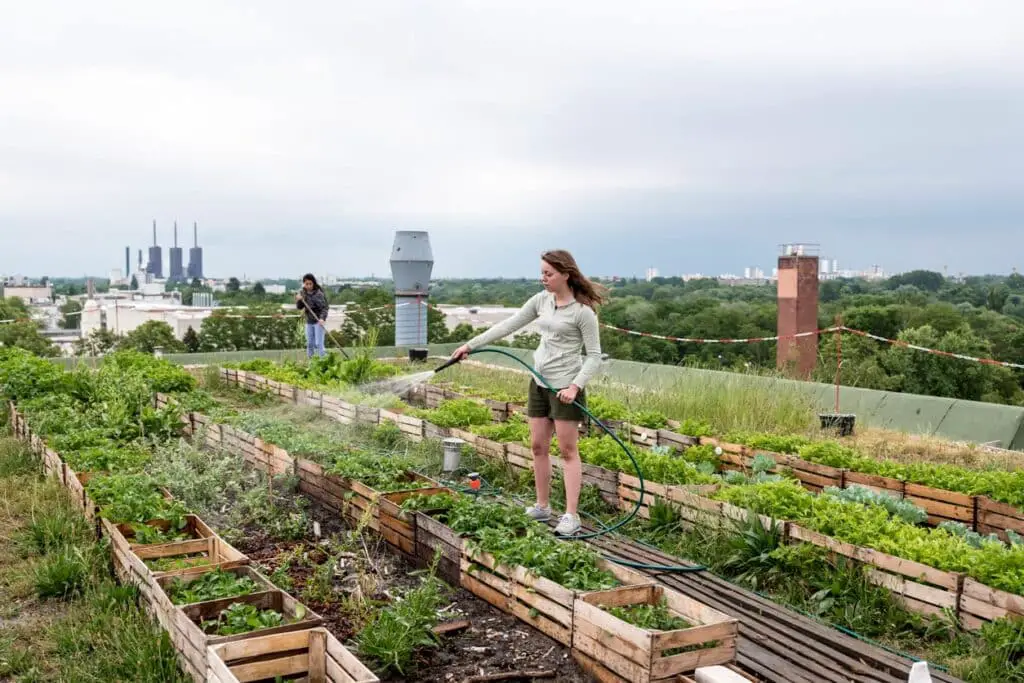
What is meant by urban gardening?
Urban gardening, also known as urban horticulture or urban agriculture, is the process of tending and cultivating a garden in an urban environment. It encompasses several unique gardening concepts, including: Container gardening: Common for people with small patios, yards, or balconies.
Urban gardening refers to the practice of growing plants and cultivating gardens in urban areas, such as cities and towns. Urban gardening can take many forms, including container gardening, vertical gardening, and community gardening. This allows individuals with limited space to still enjoy the benefits of gardening and grow their own food or flowers.
Container gardening: Common for people with small patios, yards, or balconies.
Vertical gardening is another popular form of urban gardening, especially in areas with limited horizontal space. It involves growing plants vertically, using structures such as trellises, walls, or hanging baskets. This allows gardeners to maximize their space and create beautiful green walls or hanging gardens.
Urban gardening offers numerous benefits, both for individuals and the environment. It allows city dwellers to reconnect with nature and experience the joy of growing their own food. It also promotes sustainable living by reducing the need for transportation and packaging of produce, thus reducing carbon emissions. Additionally, urban gardens can help mitigate the heat island effect in cities by providing shade and cooling the surrounding areas.
Why do people do urban gardening?
Importance of Urban Farming
It empowers people who are unemployed, underemployed, laid off, malnourished, have unhealthy diets, suffer from hunger or food insecurity. It helps people to move from stagnant, difficult conditions to vibrant, healthy and productive lifestyles.
One of the main reasons why people do urban gardening is the desire for fresh and organic produce.
Urban Gardening for Stress Relief: Cultivating Tranquility in the Cityscape
Another reason why people engage in urban gardening is the need for stress relief. Urban environments can be fast-paced and stressful, with little opportunity for relaxation and connection to nature. Gardening has been shown to have a calming effect on the mind and body, reducing stress levels and promoting a sense of well-being. The act of tending to plants and watching them grow can be a therapeutic and rewarding experience.
Urban gardening also provides a way for people to connect with nature in an urban setting. Urban gardening is a sustainable and cost-effective way to provide for oneself and contribute to a healthier planet.
What is the urban horticulture?
Urban horticulture refers to the practice of growing and cultivating plants in urban areas, such as cities and towns. Horticulture plays a crucial role in improving the quality of life in urban areas.
Urban Horticulture: Cultivating Fresh Produce in City Spaces
One of the main benefits of urban horticulture is the ability to grow fresh produce in urban areas. With limited access to farmland, urban dwellers often rely on grocery stores for their food. However, by growing their own fruits, vegetables, and herbs, they can have a direct source of fresh and nutritious food. This not only promotes healthier eating habits but also reduces the carbon footprint associated with transporting food from rural areas to cities.
Urban horticulture also provides opportunities for community engagement and social interaction. Community gardens and urban farms are often established in urban areas, where people from different backgrounds can come together to grow and share food. These spaces promote a sense of community and provide a platform for education and skill-building. They also serve as a gathering place for social events and activities, fostering social connections and a sense of belonging.
Urban horticulture is a practice that involves growing and cultivating plants in urban areas. It offers numerous benefits, including improved air quality, access to fresh produce, and opportunities for community engagement. As cities continue to grow and urbanization increases, urban horticulture will play an increasingly important role in creating sustainable and livable urban environments.
What are the types of urban horticulture?
Types of urban horticulture
- Terrace Gardening: Also called a roof garden, involves the cultivation of vegetables, fruits or flowers on the balcony or roof of buildings, or terrace. …
- Vegetable Gardening: It is the process of growing vegetables in the backyard and available space.
Urban horticulture refers to the practice of growing and cultivating plants in urban areas, such as cities and towns. It is a way to bring greenery and nature into urban spaces, providing numerous benefits to both the environment and the people living in these areas. There are several types of urban horticulture, each with its own unique characteristics and purposes.
Rooftop Gardens: Mitigating Urban Heat, Enhancing Air Quality, and Creating Recreation Spaces
1. Community Gardens: Community gardens are spaces where individuals or groups come together to grow plants and vegetables. These gardens are often located in urban neighborhoods and provide a sense of community and shared responsibility. They offer opportunities for people to connect with nature, learn about gardening, and grow their own food.
2. Rooftop Gardens: Rooftop gardens are becoming increasingly popular in urban areas, especially in densely populated cities. These gardens are created on the rooftops of buildings, utilizing the available space to grow plants and create green areas. Rooftop gardens help to reduce the urban heat island effect, improve air quality, and provide recreational spaces for residents.
3. Vertical Gardens: Vertical gardens, also known as living walls or green walls, are structures that allow plants to grow vertically on walls or other vertical surfaces. These gardens are often used to beautify urban spaces, improve air quality, and provide insulation to buildings. They can be found on the exterior or interior walls of buildings, adding a touch of nature to urban environments.
4. Urban Farms: Urban farms are larger-scale agricultural operations located within urban areas. These farms can include vegetable gardens, fruit orchards, or even livestock. Urban farms aim to provide fresh and locally grown food to urban communities, promote sustainable agriculture practices, and create educational opportunities for residents.
5. Pocket Parks: Pocket parks are small green spaces scattered throughout urban areas. These parks are designed to provide a place for relaxation, recreation, and connection with nature. They often include trees, shrubs, and benches, creating a peaceful oasis in the midst of a bustling city.
What are the 5 types of urban?
Depending on the size and the services available and functions rendered, urban centres are designated as town, city, million city, conurbation, megalopolis. Town: The concept of ‘town’ can best be understood with reference to ‘village’.
Urban areas are characterized by their high population density, extensive human features, and infrastructure. They are often the centers of economic, cultural, and social activities. Urban areas can vary greatly in terms of their size, population, and development.
There are several types of urban areas that can be classified based on different criteria.
1. Metropolitan areas: Metropolitan areas are large urban regions that consist of a central city and its surrounding suburbs. These areas are typically characterized by their high population density, diverse economic activities, and extensive transportation networks. Metropolitan areas are often the economic and cultural hubs of a country or region.
2. Megacities: Megacities are urban areas with a population of over 10 million people. These cities are characterized by their massive size, rapid population growth, and significant economic and social challenges. Megacities often face issues such as overcrowding, inadequate infrastructure, and environmental degradation.
3. Micropolitan areas: Micropolitan areas are smaller urban regions that have a population between 10,000 and 50,000 people. These areas are typically located in rural areas and serve as economic and social centers for the surrounding communities. Micropolitan areas often have a more relaxed pace of life compared to larger urban areas.
4. Satellite cities: Satellite cities are urban areas that are located near a larger metropolitan area but function as independent cities. These cities are often developed to alleviate the population pressure and congestion in the main city. Satellite cities typically have their own economic activities, infrastructure, and residential areas.
5. Resort towns: Resort towns are urban areas that are primarily developed for tourism and recreation purposes. These towns are often located in scenic areas such as coastal regions or mountainous areas. Resort towns typically have a high concentration of hotels, resorts, and recreational facilities to cater to tourists.
What is urban gardening?
Urban gardening refers to the practice of growing plants and vegetables in urban areas, such as rooftops, balconies, or small gardens. It is a way for city dwellers to engage in gardening and enjoy the benefits of fresh produce. Urban gardening has gained popularity in recent years as more people are becoming aware of the importance of sustainable living and the benefits of growing their own food.
One of the main advantages of urban gardening is the ability to have access to fresh and organic produce. By growing your own fruits, vegetables, and herbs, you have control over what goes into your food and can avoid harmful pesticides and chemicals. This not only improves the quality of the food you consume but also promotes a healthier lifestyle.
Additionally, urban gardening can contribute to the overall well-being of individuals and communities. It provides a sense of connection to nature and allows people to engage in a productive and fulfilling activity. Gardening has been shown to reduce stress, improve mental health, and increase physical activity. Furthermore, urban gardens can serve as green spaces in cities, improving air quality and providing habitats for wildlife.
What are the benefits of urban gardening?
Urban gardening offers numerous benefits for both individuals and communities. Firstly, it provides city dwellers with access to fresh and nutritious produce. By growing their own fruits, vegetables, and herbs, urban gardeners can ensure that they are consuming food that is free from harmful pesticides and chemicals. This promotes better health and well-being, as fresh produce is packed with essential vitamins, minerals, and antioxidants.
Additionally, urban gardening contributes to the overall sustainability of cities. By utilizing small spaces like rooftops and balconies, urban gardeners can help reduce the urban heat island effect and improve air quality. Plants absorb carbon dioxide and release oxygen, helping to mitigate the impacts of climate change. Moreover, urban gardens can act as green spaces that provide habitat for pollinators and other wildlife, enhancing biodiversity in urban environments.
In terms of community benefits, urban gardening fosters a sense of connection and social cohesion. It brings people together, allowing them to share knowledge, resources, and experiences. Community gardens, for example, provide a space for neighbors to interact and collaborate, strengthening community bonds. Furthermore, urban gardening can also contribute to food security by supplementing the availability of fresh produce in underserved areas, where access to healthy food options may be limited.
What are the benefits of urban gardening?
Urban gardening offers a multitude of benefits for both individuals and communities. Firstly, it provides city dwellers with the opportunity to reconnect with nature and engage in a fulfilling and rewarding hobby. Gardening has been proven to reduce stress levels and improve mental well-being, as it allows individuals to escape the hustle and bustle of urban life and find solace in nurturing plants and watching them grow. The act of tending to a garden also promotes physical activity, which is essential for maintaining a healthy lifestyle.
Urban gardening has significant environmental advantages. By growing plants and vegetables in urban areas, we can reduce the carbon footprint associated with transporting produce from rural areas to cities. Additionally, urban gardens contribute to improving air quality by absorbing carbon dioxide and releasing oxygen. They also help mitigate the urban heat island effect by providing shade and cooling the surrounding areas. Moreover, urban gardens can act as natural habitats for pollinators, such as bees and butterflies, which are crucial for the reproduction of many plant species.
In terms of community benefits, urban gardening fosters a sense of community and social cohesion. It provides a space for neighbors to come together, share knowledge, and collaborate on gardening projects. Overall, urban gardening has the potential to transform cities into greener, healthier, and more sustainable environments.
What are the benefits of urban gardening?
Urban gardening offers numerous benefits for both individuals and communities. Firstly, it provides city dwellers with access to fresh and nutritious produce. By growing their own fruits, vegetables, and herbs, urban gardeners can ensure that they are consuming food that is free from harmful pesticides and chemicals. This promotes better health and well-being, as fresh produce is packed with essential vitamins, minerals, and antioxidants.
Additionally, urban gardening contributes to the overall sustainability of cities. By utilizing small spaces like rooftops and balconies, urban gardeners can help reduce the urban heat island effect and improve air quality. Plants absorb carbon dioxide and release oxygen, helping to mitigate the impacts of climate change.
What are the benefits of urban gardening?
Urban gardening offers numerous benefits for both individuals and communities. Firstly, it provides city dwellers with access to fresh and nutritious produce. This promotes better health and well-being, as fresh produce is packed with essential vitamins, minerals, and antioxidants.
Additionally, urban gardening contributes to the overall sustainability of cities. By utilizing small spaces like rooftops and balconies, urban gardeners can help reduce the urban heat island effect and improve air quality. Plants absorb carbon dioxide and release oxygen, helping to mitigate the impacts of climate change. Moreover, urban gardens can act as green spaces that provide habitat for pollinators and other wildlife, enhancing biodiversity in urban environments.
In terms of community benefits, urban gardening fosters a sense of connection and social cohesion. It brings people together, allowing them to share knowledge, resources, and experiences. Community gardens, for example, provide a space for neighbors to interact and collaborate, strengthening community bonds. Furthermore, urban gardening can also contribute to food security by supplementing the availability of fresh produce in underserved areas, where access to healthy food options may be limited.
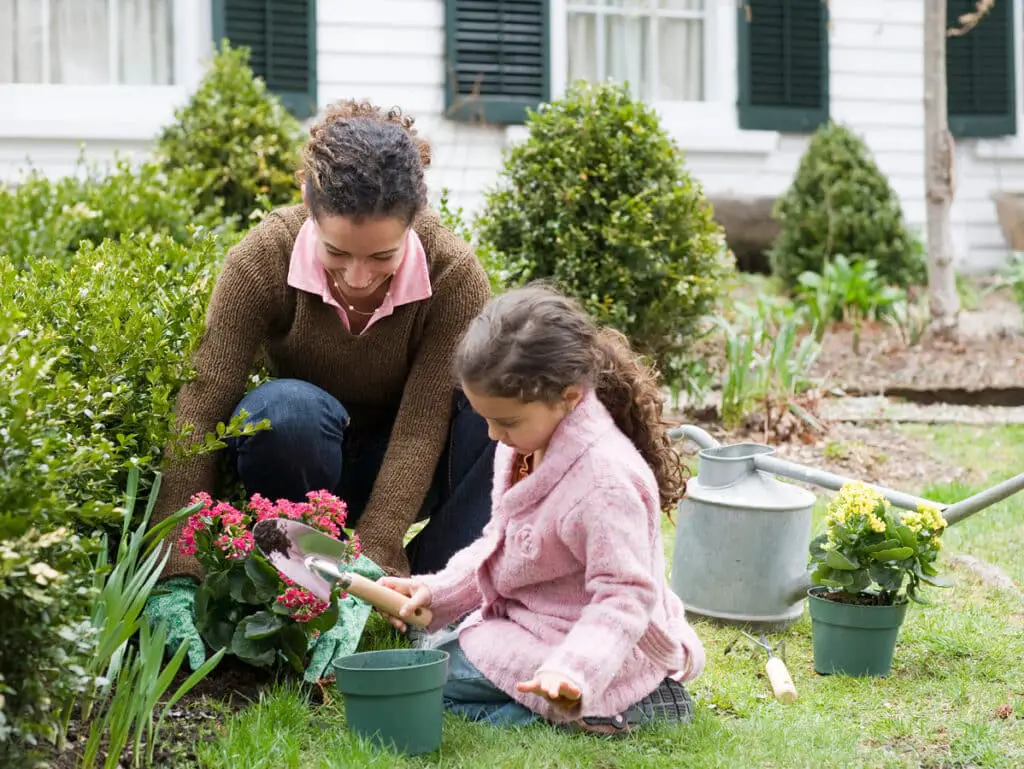
Conclusion
Urban gardening is a growing trend that involves cultivating plants and vegetables in urban areas, such as rooftops, balconies, and small outdoor spaces. It is a response to the limited availability of land in cities and the desire for individuals to reconnect with nature and grow their own food. This practice has gained popularity in recent years due to its numerous benefits, including environmental sustainability, improved mental and physical health, and community building.
One of the main advantages of urban gardening is its positive impact on the environment. By utilizing unused spaces in cities, urban gardening helps to reduce the heat island effect, improve air quality, and mitigate the effects of climate change. Plants absorb carbon dioxide and release oxygen, making urban areas greener and more breathable. Additionally, urban garden can act as natural water filters, reducing the amount of runoff and pollution entering waterways. These environmental benefits make urban gardening an important tool in creating more sustainable and resilient cities.
Lastly, urban gardening has the power to bring communities together and foster social connections. It provides a space for people to interact and share knowledge, experiences, and resources. Community gardens, in particular, have been successful in promoting social cohesion and creating a sense of belonging. They offer opportunities for individuals from diverse backgrounds to come together and work towards a common goal. Urban gardening can also be a platform for education, as it allows for the exchange of gardening techniques, sustainable practices, and nutritional information. By bringing people together, urban gardening strengthens communities and creates a sense of unity.



